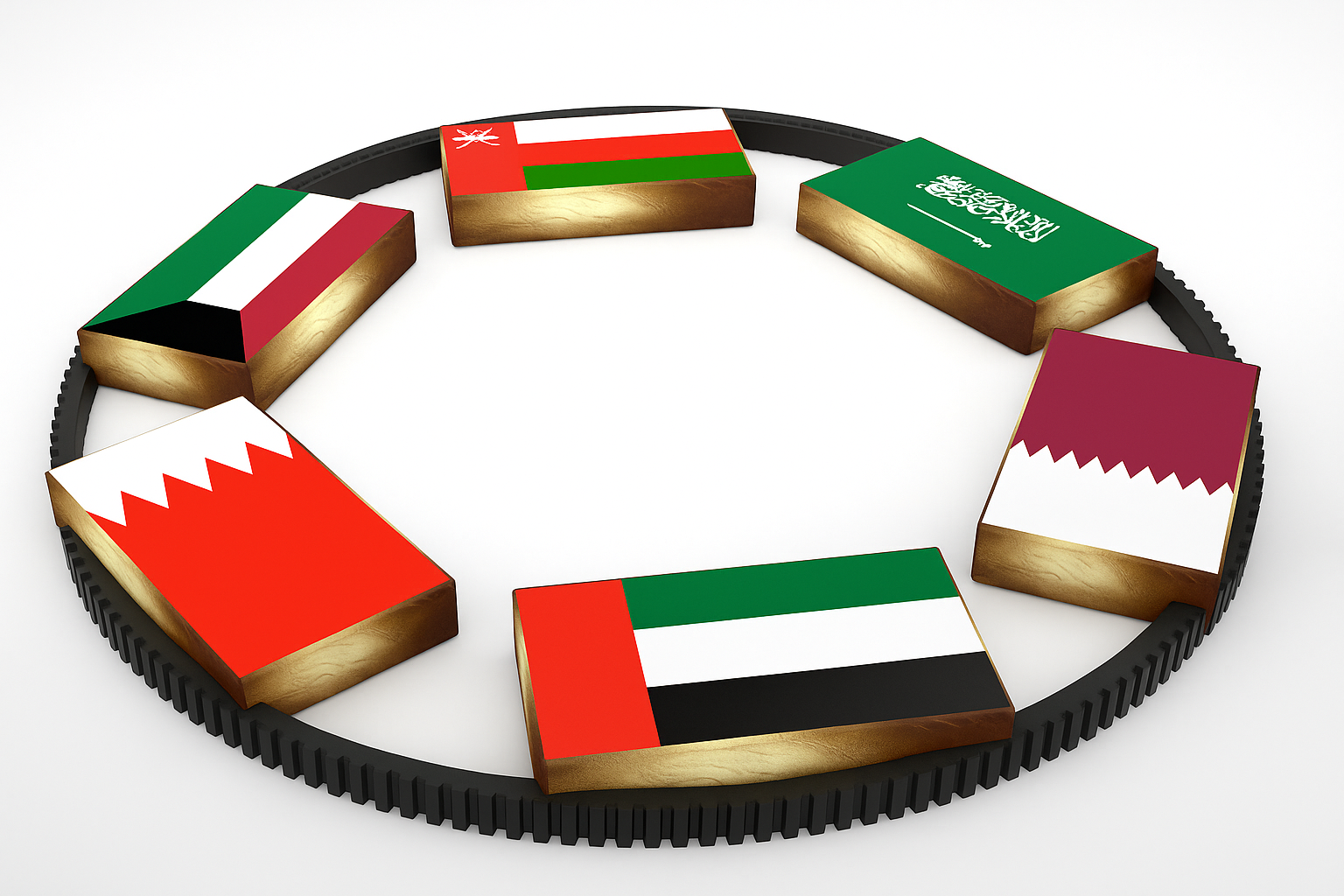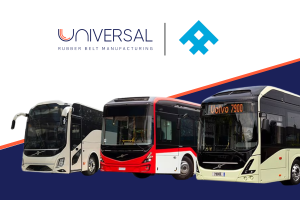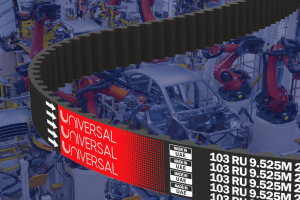In recent years, the Gulf Cooperation Council (GCC) region — comprising Saudi Arabia, the UAE, Qatar, Oman, Kuwait, and Bahrain — has been undergoing rapid industrialization, infrastructure expansion, and a push toward economic diversification. As this transformation accelerates, demand for essential industrial components has surged. Among these, rubber belts and related power transmission and conveyor solutions play a crucial yet often under-appreciated role.
Rubber belts (including transmission belts, V-belts, timing belts, conveyor belts, banded belts, etc.) form the backbone of many mechanical and material handling systems. They enable motion transfer, load conveyance, and synchronized operations across a wide array of industries. In the GCC, particular sectors stand out as especially strong drivers of rubber belt demand.
In this article, we explore the top 5 industries driving demand for rubber belts in the GCC, analyze trends and challenges, and spotlight how a regional manufacturer like Universal RBM is positioned to meet the need.
1. Construction & Infrastructure / Building Materials
Why this industry matters
The construction and infrastructure sector has long been a pillar of GCC growth. Mega projects — from new cities (e.g. NEOM in Saudi Arabia) to major airport expansions, rail networks, and port upgrades — require enormous volumes of materials and continuous handling systems. As GCC countries continue to invest heavily in both public and private infrastructure, the demand for durable mechanical systems (crushers, mixers, conveyors, hoists, elevators, etc.) rises in tandem.
How rubber belts are used
Rubber belts find use across many subdomains of construction and building materials:
- Aggregate & Cement Plants: Conveying raw materials (crushed rock, sand, gravel) through crushers, screens, and kilns often employs heavy-duty rubber conveyor belts with high abrasion resistance.
- Material processing & finishing: In factories producing tiles, bricks, gypsum boards, precast concrete elements, and roofing materials, belts are used in production lines, drying tunnels, and packaging stages.
- Elevators, Escalators & Vertical Conveyance: Some belt solutions are used in lift systems or belt-driven hoists.
- Mixers, Crushers, Crushers Drive Systems: Power transmission belts (V-belts, banded belts) drive motors, gearboxes, and support machinery.
Because of the harsh environment (heat, dust, abrasion) in GCC construction sites, belts need to be highly durable, heat- and UV-resistant, and low maintenance.
Market scale & trends
- The GCC conveyor belt market was valued at around USD 130.2 million in 2024 and is forecast to reach USD 190.1 million by 2033, driven in part by construction and infrastructure demand. IMARC Group+1
- In the IMARC forecast, construction and urbanization are flagged as key drivers accelerating belt adoption across GCC. IMARC Group+1
- On the manufacturing side, many building material factories relocate or expand into the GCC to meet local demand, increasing need for industrial belts.
Challenges & considerations
- Belts must withstand abrasive materials and resist wear (often requiring special top covers or carcass strength).
- Custom lengths, widths, and splice methods are often required depending on project layout.
- Local supply chains, lead times, and technical support are essential given the construction project timelines.
2. Oil, Gas & Petrochemicals
Strategic importance in the GCC
The oil & gas sector remains a cornerstone of GCC economies. While diversification is a strategic goal, petrochemical complexes, refineries, offshore and onshore installations, and gas processing plants still drive a large portion of industrial activity. Maintenance, uptime, and reliability are crucial in these capital-intensive operations.
Belt applications in O&G / petrochemicals
Rubber belts are used extensively in:
- Pumps, compressors & blower drives: V-belts, cogged belts, and banded belts transmit power from prime movers to pumps and compressors in process units and utilities.
- Material handling in petrochemical plants: These include conveyors for solid feedstock (e.g. catalysts, pellets, salts), waste removal, and packaging operations.
- Utility systems & HVAC: Belts drive fans, blowers, cooling towers, air handling units, etc.
- Ancillary equipment: E.g. belts for belt-fed instruments, drive systems for loading arms, turntables, and conveyor transfers.
Given exposure to oil, chemicals, extreme temperature swings, and occasional explosive atmospheres, belts in this sector often require chemical-resistance, flame-retardant properties, static-dissipative characteristics, and compliance with safety codes.
Market drivers & demand
- Petrochemical expansion plans in Saudi Arabia, UAE, and Qatar have large capex budgets for plant upgrades and capacity expansion.
- Scheduled maintenance cycles (turnarounds) drive periodic belt replacement and spares demand.
- As GCC industries adopt more automation, higher-speed and precision-driven drives are needed (which often means higher-grade rubber belt materials).
- Synthetic rubber demand in GCC sees growth from non-tire uses such as hoses, gaskets, and belts. Mobility Foresights
Challenges & solutions
- Strict quality standards and certifications (e.g. IEC, ATEX) may apply in hazardous areas.
- Belt suppliers need to ensure material compatibility with chemical exposures, heat, and static discharge.
- The cost of downtime is very high, so reliability, predictive maintenance, and spares availability are key competitive differentiators.
3. Mining, Quarrying & Bulk Material Handling
The mining & quarrying context in GCC
Though not as mineral-rich as some other regions, the GCC has growing sectors in mining (e.g. limestone, gypsum, phosphate, copper in Oman) and quarrying for building materials. In addition, bulk-handling systems for ports, cement plants, and aggregates create continuous demand for high-capacity lifts and conveyors.
Use cases for rubber belts
- High-capacity conveyors for ore, crushed rock, aggregates, and raw minerals.
- Crusher and mill drive systems, where belts must handle torque surges and abrasive slag.
- Transfer and stacker-reclaimer belts in open-pit operations or raw storage yards.
- Specialty belts (flame resistant, oil resistant, cut-resistant) for demanding environments.
- Heavy-duty V-belt or banded drives on heavy machinery.
Market data & growth trends
- The global rubber conveyor belt market (which includes mining and bulk material use cases) is projected to grow from USD 4.33B in 2023 to USD 6.16B by 2032. Zion Market Research
- Key end-user segments include manufacturing, power generation, coal & mining, logistics, airlines, and construction. Zion Market Research
- In the GCC specifically, infrastructure projects rely on continuous bulk material flow (e.g. for road, bridge, port construction), further fueling conveyor demand. Mobility Foresights+1
Challenges & expectations
- Belts in this setting face harsh abrasion, UV exposure, temperature extremes, and potential exposure to sharp materials.
- Belt splices, edge protection, carcass reinforcement, and regular inspections are critical.
- Local belt manufacturing with rapid replacement options is a competitive advantage in remote sites.
4. Logistics, Warehousing & E-commerce / Material Handling
The logistics surge in the GCC
E-commerce, global trade corridors, free zones (Dubai, Jebel Ali, Ras Al Khaimah, NEOM, etc.), and rapid consumer demand have elevated logistics and warehousing to top priority in the GCC. These facilities depend heavily on conveyor and intralogistics systems for parcel sorting, baggage handling, order fulfillment, and last-mile operations.
Belt roles in logistics & warehousing
- Parcel sorting conveyors: belts (rubber, modular, etc.) move packages across diverters, chutes, and sorting hubs.
- Baggage handling systems in airports: belts in carousels, conveyors, transfers.
- Automated storage and retrieval systems (AS/RS): belts in horizontal shuttles, transfer mechanisms.
- Order picking lines and packing stations: belts connecting packaging, labeling, and wrapping zones.
Demand dynamics
- The rise of online retail and same-day delivery in GCC drives investment in high-throughput conveyor systems. Mobility Foresights+1
- Airport expansion in Dubai, Doha, Riyadh, and other GCC hubs increases demand for belts in baggage handling.
- Warehouses seek belts with low maintenance, low noise, long life, and high precision.
- The GCC conveyor belt market is expected to grow as logistics modernize. IMARC Group+1
Technical challenges & required features
- Belts must be low-noise, anti-static, low stretch, and durable under continuous operation.
- Quick replaceability, modular design, and minimal downtime are important in high-throughput environments.
- Hygiene and cleaning capabilities are also relevant for operations involving food or pharmaceuticals.
- Integration with automation, sensors, and IoT requires smart belt monitoring readiness.
5. Manufacturing, Food & Beverage, Packaging
Manufacturing & process industries in GCC
Across the GCC, many industries are expanding manufacturing capacities: food & beverage, FMCG, consumer goods, packaging, pharmaceuticals, plastics, textiles, and metals. These require precise, consistent, and high-speed production lines.
Belt applications in manufacturing & packaging
- Power transmission belts (V-belts, synchronous belts, banded belts) that drive conveyors, mixers, rollers, pumps, fans, and machine tools.
- Conveyor belts in production lines, filling lines, inspection, quality control, and packaging.
- Food-grade belts: belts that meet hygiene standards (FDA, EU food safety), washdown resistance, anti-microbial surfaces.
- Clean room / pharma belts: belts with low particle shedding or special compounds.
Market trends & demand
- According to Transparency Market Research, growing industrial automation in agriculture, automotive, and manufacturing is a major driver of the rubber transmission belts market. TMR
- In GCC, the manufacturing push under economic diversification plans (e.g. Saudi Vision 2030, UAE industrial strategies) spurs demand for reliable, high-performance belts.
- Food & beverage, packaging, and consumer goods sectors increasingly demand conveyor systems for automated production, inspection, and packaging.
Key challenges & design considerations
- Belts must meet hygiene, cleanliness, and regulatory standards.
- Material selection must handle chemical cleaners, moisture, temperature swings.
- Supplier support, spares supply, and quick lead times are important to minimize line downtime.
Cross-Cutting Trends & Market Drivers
Beyond these five sectors, several overarching trends and regional dynamics amplify the rubber belt demand in the GCC.
1. Industrial automation & digitalization
Across sectors, factories and plants are increasingly adopting Industry 4.0, robotics, predictive maintenance, sensorized systems, and IoT integration. Such systems push belt suppliers to offer belts with embedded sensors or compatibility with condition-monitoring systems.
2. Local manufacturing & supply chain resilience
Until recently, many rubber belts in the GCC were imported, often with long lead times and supply chain risk. The establishment of locally based manufacturing (e.g. Universal RBM’s Dubai facility) reduces reliance on imports, shortens delivery periods, and improves customized support. Construction Machinery Middle East News+2Technical Review Middle East+2
3. Material innovation & specialization
Developments in rubber compounds (heat-resistant, oil-resistant, flame-retardant, static dissipative, eco-friendly) enable belts to perform in more demanding environments (e.g. O&G, mining). GCC synthetic rubber market growth also supports these innovations. Mobility Foresights
4. Demand for energy efficiency & lifecycle cost optimization
Belts with lower power loss, reduced slip, and longer maintenance intervals help industries reduce lifetime operational costs (important in high-energy-cost settings).
5. Government and project-led investments
National infrastructure programs, industrial cities, and sovereign development funds support large-scale projects that inherently demand belts (ports, airports, rail, utilities).
6. Replacement & aftermarket demand
Regular belt replacement, spares stocking, preventive maintenance, and retrofitting create recurring demand across all industries.
Why Universal RBM Has a Strategic Advantage
Given the rising demand for rubber belts across multiple sectors, a manufacturer with regional presence and specialization stands to benefit. Universal RBM (Universal Rubber Belts Manufacturing) is well positioned to capture this opportunity in several ways:
- Local production in Dubai
Universal RBM recently opened a state-of-the-art production facility “Made in Dubai” to serve the GCC market, reducing dependence on imports and improving lead times. Gulf Industry Online+3Construction Machinery Middle East News+3PlantAndEquipment.com+3 - Product range and technical capability
The company supplies automotive belts (V-belts, timing belts, multi-rib), industrial transmission belts (for pumps, compressors, HVAC), and specialty belts (heat-resistant, oil-resistant, anti-static) plus custom private-label manufacturing. Gulf Industry Online+2Construction Machinery Middle East News+2 - Standards compliance and quality assurance
Belts are produced under rigorous quality regimes and comply with ISO, SAE, DIN standards. Technical Review Middle East+2PlantAndEquipment.com+2 - Logistics & regional distribution
Based in Dubai, the plant benefits from strong logistics links across the GCC (UAE, Saudi Arabia, Oman, Qatar, Bahrain, Kuwait), facilitating rapid delivery and spares provisioning. Technical Review Middle East+2Construction Machinery Middle East News+2 - Engineering & customization support
The ability to engineer belts tailored to specific industrial or environmental conditions (temperature, chemical exposure, abrasion) gives Universal RBM a competitive edge. - Market timing and alignment
The facility opening aligns with increasing regional industrialization and the broader trend toward supply chain localization — giving Universal RBM momentum in capturing new projects and replacement business.
By aligning its strategy with the demand-driving industries listed above, Universal RBM can become a preferred regional supplier for belt-intensive operations in the GCC.
Recommendations for Industry Stakeholders
To maximize benefit from the surging demand for rubber belts, both end-users (industries) and belt suppliers should consider the following:
- For end-users / industrial buyers:
- Prioritize total cost of ownership (lifecycle, downtime cost, energy efficiency) over lowest upfront cost.
- Develop strong relationships with local belt manufacturers for better support, technical service, and spares.
- Specify belt properties (compound, reinforcement, covers) appropriate to your environment (heat, chemicals, dust).
- Incorporate condition monitoring, real-time sensors, and preventive maintenance to extend belt life.
- Keep spares stocking and plan synchronized replacement cycles to reduce downtime.
- For belt manufacturers / suppliers:
- Develop modular, sensor-compatible belts to cater to smart factories.
- Invest in R&D for specialized compounds (heat, flame, chemical resistance, etc.).
- Strengthen regional service networks, technical support, and fast-turn splicing capabilities.
- Maintain rigorous quality certifications and demonstrate compliance, especially for regulated industries (O&G, food, pharma).
- Align production capacity and inventory strategies to meet cyclical replacement demand and major project timelines in GCC.
Conclusion
The top 5 industries driving demand for rubber belts in the GCC — construction & infrastructure, oil & gas / petrochemicals, mining & bulk materials, logistics & warehousing, and manufacturing & packaging — each exert powerful pull on the rubber belt and conveyor sector. As the region scales up industrialization, automation, and localized production, the demand for durable, high-performance belts will only intensify.
For a company like Universal RBM, the convergence of local manufacturing, technical capability, and strategic alignment with GCC industrial growth offers a compelling opportunity to become a regional leader in rubber belt solutions.





